News consumption tends to drive other media habits, so it’s always worth tracking what’s changing in people’s digital consumption behaviour. The RISJ Digital News Report is a good source, now covering most of the world. I’ve spotted five main trends and discuss what they might mean for more general publishing businesses.
1. Limited growth in % paying for online news
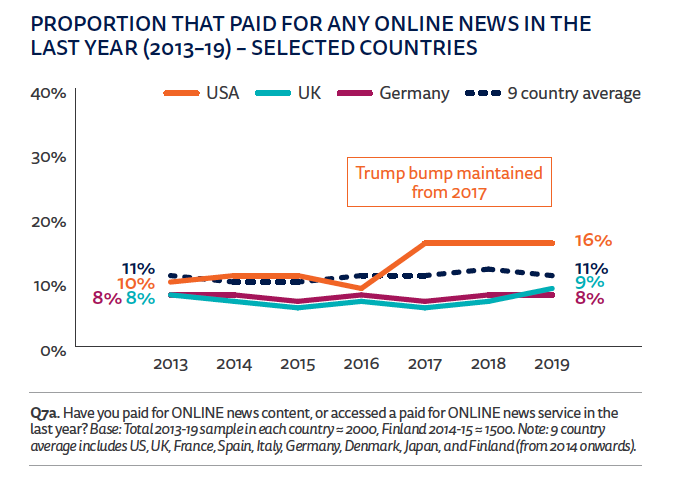
Only a minority of people currently pay for online news. In most Western economies, it varies between 7% and 17%, with the Nordics at the upper end. There’s some growth in new business models: the Guardian’s contributions approach has been reasonably successful, and a number of niche players are exploring the member/donor zone. But there does seem to be a ceiling on the proportion of the population that will pay. They certainly skew to the more affluent and the more highly educated.
The challenge for pure news media is, as ever, that there are still many free sources available for consumers. But as more media outlets start to implement paywalls the free options start to close down.
Most news media operating a metered paywall find that 2-5% of their free readership will convert to paid subscriptions. The Guardian reaches 85m unique browsers a month (5m a day) yet has just 600k contributors. Its business plan is to grow this contributor base to 2m, at which point it will be financially sustainable. Already over half its revenue comes from readers rather than advertisers (its print circulation is now only 130k). So, it does seem to be possible to build a sustainable business model with only a fraction of the audience paying.
More niche publishers, especially in the B2B sector, are increasingly experimenting with paywalls of varying designs. It can be challenging if others in your sector are still offering free content, but if you can offer something unique, there may be enough who are prepared to pay to make it worthwhile.
2. Wariness about the accuracy of news
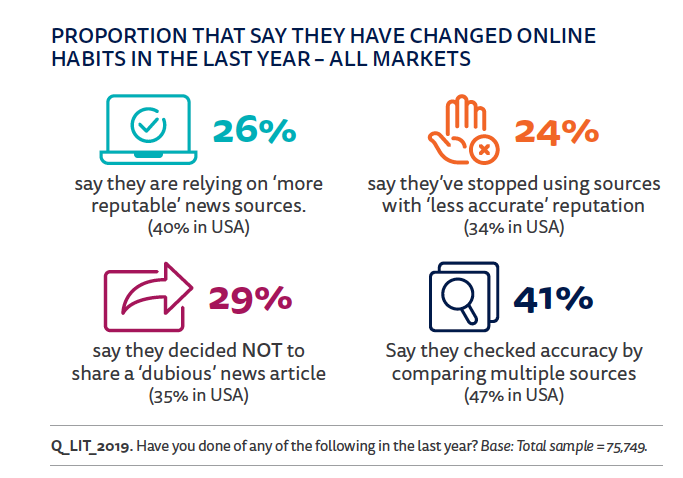
Political upheaval and increasing partisanship are causing more people to lose trust in news sources. It’s most striking in the countries where there has been more political disruption (eg Brazil or France). This is causing people to rely increasingly on “more reputable” news sources and be warier about news shared on social media or from more fringe sources.
This should be good news for established publishers with a reputation for accurate and balanced reporting. It is probably worth reminding your audience of your editorial credentials to strengthen your connection.
3. Smartphone as main gateway
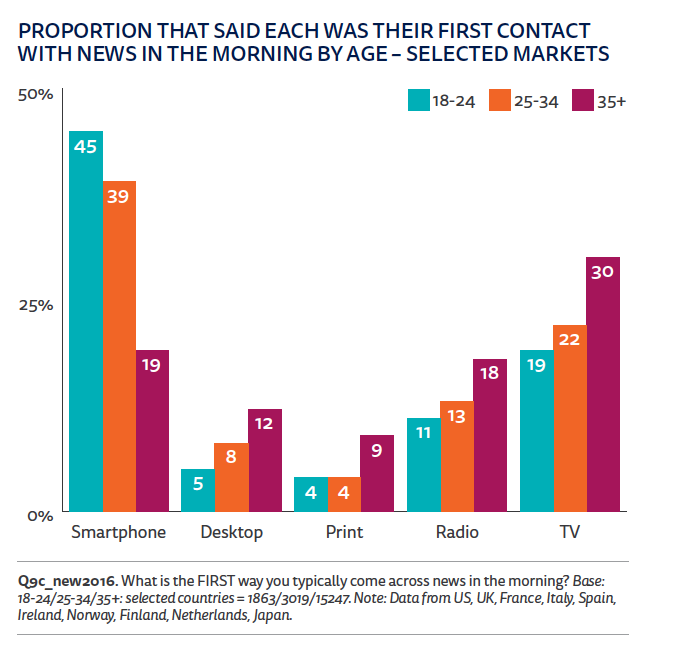
It’s no surprise that for under 34s, the smartphone is the first place people go for the news in the morning, with social media and messaging apps the most popular source. Whilst Facebook is first, YouTube and WhatsApp are close behind.
So media owners need to think about their social distribution strategy if they are targeting younger groups. Younger consumers are also less brand loyal and are open to consuming content from multiple sources.
There is also strong growth in mobile notifications as a route to news stories. As smartphones are personal devices, it will become easier for publishers to target notifications for individuals and dayparts.
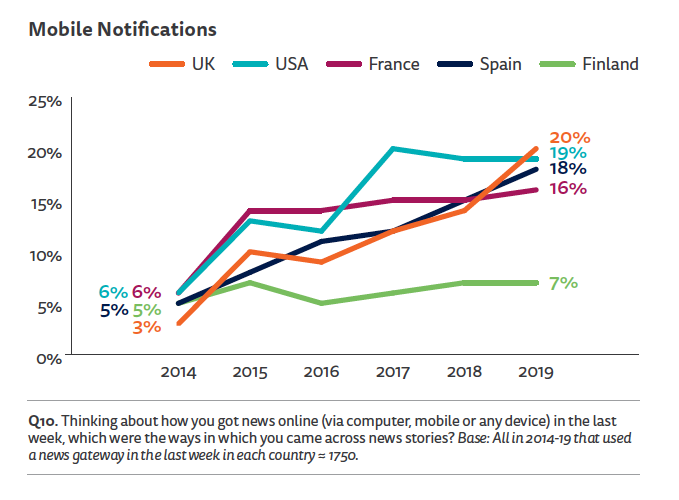
Even niche publishers who don’t major on news need to think about how they attract the attention of younger consumers earlier in the day, and what methods they might use to drive traffic to their top stories.
4. Growing interest in audio
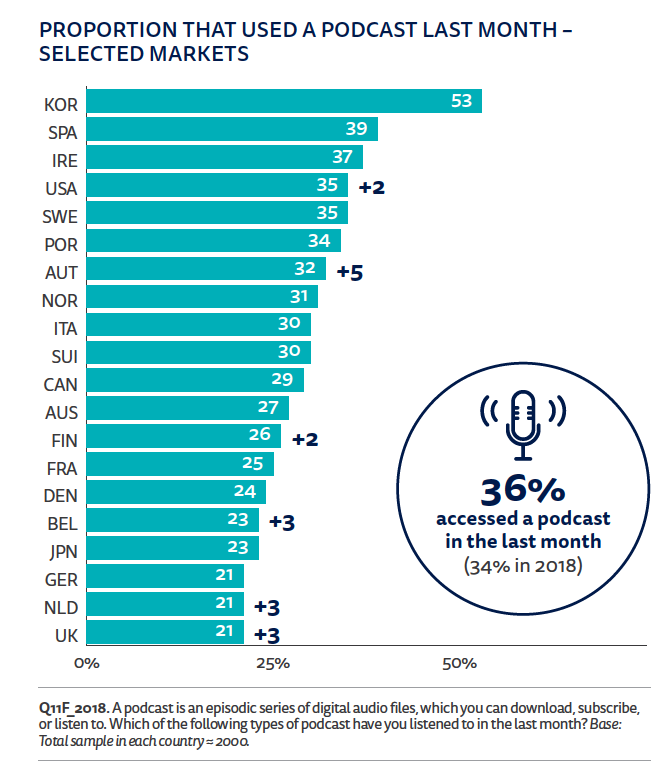
One third of the worldwide digital audience had consumed a podcast in the last month (and 15% one specifically about news or politics). Podcast listening skews younger, and listening is usually on a smartphone (62% of under 35s). People are as likely to listen at home as whilst travelling, and it seems to be becoming a replacement for radio, offering people more control on the topics and scheduling.
A growing number of publishers are developing a range of podcasts featuring their most popular commentators and columnists. These can be free to listen, and funded by advertising, or, increasingly, bundled into a subscription package (eg Times, Economist).
5. Email newsletters still drive engagement
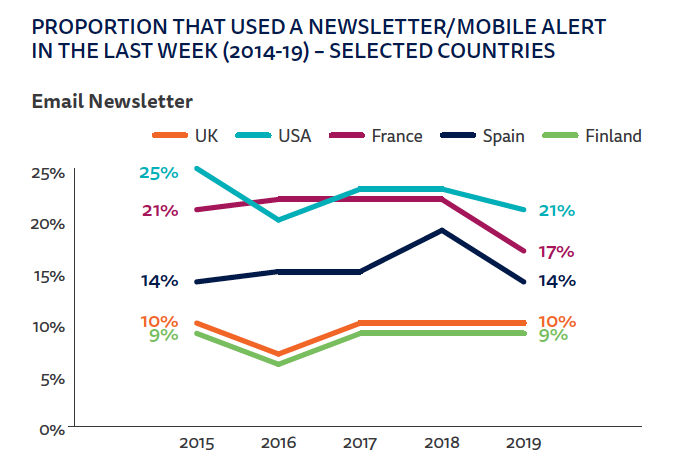
Email feels like an old technology, but with more people accessing email on phones, email newsletters are proving a powerful way to prompt visits and build loyalty. 42% of US digital consumers and 35% in the UK have used email newsletters in the last week. The Washington Post has around 70 different newsletters and learnt that recipients consume 3 times as much content as those who don’t.
Outside pure news media, Wired has discovered that email newsletter recipients are 19 times more likely to become paying subscribers than visitors who arrived via search. So, this is one “old” marketing channel that still seems to be delivering.
Here’s the link to the full report
In conclusion, media owners in all markets would do well to investigate podcasts and smartphone notifications, reinvigorate their email newsletters, and bolster their editorial reputation. Subscriptions may not be a mass participation sport, but they can still be a strong contributor to a business model.
If you’d like to discuss any of the ideas in this article, feel free to get in touch for a chat over coffee or over the phone.
Find out more about the advice we provide for publishers
Read case studies of our projects

